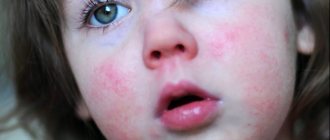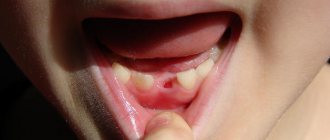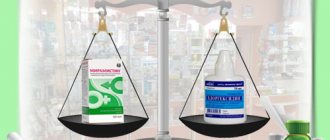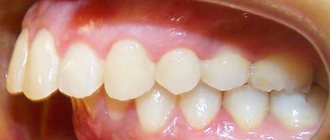Iodinol: what helps
The iodine contained in the product provides the solution with a bactericidal effect. The simultaneous presence of 95% ethanol enhances this effect. The product is intended exclusively for topical use on affected surfaces. It is recommended to treat the edges of the wound, excluding liquid from entering exposed tissue areas. Contacting a healthy surface, Iodinol triggers blood flow activation processes, since it also has a certain irritating effect.
A small part of the substance can be absorbed into the bloodstream from the surface of the skin through small capillaries. With the bloodstream, iodine is able to travel from organ to organ. Some of it will be absorbed by the thyroid gland during such a journey. Excretion from the body occurs through the kidneys, liver and intestines.
Iodinol is used for:
- small abrasions;
- injuries;
- myalgia;
- infectious lesions of the skin.
Apply a thin layer to the skin, not generously, using a cotton swab or cotton swab. It should be remembered that the product has a brown tint, which will remain as pigmentation on the body.
Useful properties and uses of blue iodine
Iodine preparations are used to treat the throat (Lugol's solution), to disinfect the skin around the injury (5% alcohol solution). The irritating and toxic substances they contain limit their oral use.
“Blue iodine” eliminates inflammation and treats various diseases of internal organs.
St. Petersburg scientist Mokhnach V.O. To neutralize the toxic effect of iodine, he combined it with starch. Blue potato jelly gave the drug its name – “blue iodine”.
Studies have confirmed the anti-inflammatory, antiseptic, antimicrobial, antiviral, antifungal properties of iodinol and any other colored iodine compounds, and their low toxicity.
The drug has a gentle effect on the microflora of the gastrointestinal tract, covers damage to the mucous membrane, creates a protective layer, which contributes to a speedy recovery.
Iodinol was first used during the Great Patriotic War for the treatment of bacterial dysentery, colitis, and enterocolitis. Tests have confirmed that oral administration clears bacteria from the intestinal mucosa within five days.
The antiviral and antibacterial properties of iodinol are used for various diseases. They are used to gargle, treat tonsillitis, colitis and enterocolitis, stomach ulcers, dysentery, bloody diarrhea, poisoning, stomatitis, conjunctivitis, non-healing wounds, burns.
The drug affects blood composition, protein and fat (lipid) metabolism, reduces cholesterol and glucose levels in the blood, cleans blood vessels, and restores their elasticity. Therefore, iodinol is not only used to gargle, but is used for recovery after a stroke and normalization of high or low blood pressure.
Ingestion enhances thyroid function. Its violation affects metabolism and reduces immunity.
Iodine preparations stimulate the reflex secretion of mucus in the respiratory tract and have an expectorant and sputum-thinning effect.
Iodinol for rinsing
In their practice, otolaryngologists often use Iodinol as a rinse. You just need to keep in mind that rinsing is not carried out with a pure solution, but with a prepared mixture of several drops. This procedure ensures the treatment of the tonsils. For chronic tonsillitis of any etiology, such rinsing allows you to relieve the severity of inflammation and wash off the pathogen from the surface of the porous tissue, disinfecting the surface of the tonsils for a while.
Additionally, iodine heating procedures may be prescribed. They involve applying the solution directly to the tonsils. Iodine, irritating the surface of the glands, activates blood flow in the capillaries and vessels, due to which the local temperature rises. Harmful microorganisms cannot multiply in such an environment, which contributes to a speedy recovery.
In addition to treating tonsils, Iodinol can be used as a component for preparing a solution for rinsing the nose. This product is also used to disinfect the walls of the respiratory tract and wash away most of the germs from them.
The principle of action and effectiveness of iodinol
Note! Iodinol is not an antibiotic drug, which mainly forms the basis of the course of treatment for sore throats.
But due to its antiseptic properties, the product is considered an effective antiseptic that prevents the development of pathogenic microflora (among such harmful microorganisms are gram-positive and gram-negative pathogens).
The drug is effective against streptococcal infections, but it is powerless in cases where the causative agent of tonsillitis is Pseudomonas aeruginosa.
In general, this drug shows good results if used to treat affected tissues of the larynx, but the use of this medicine for monotherapy and as the main remedy is not allowed.
Iodinol: instructions for use
Iodinol is not taken orally. This product is for local external use only. It is necessary to follow the rules for treating wounds:
- Apply the product only to the edges of the wound.
- Avoid getting the solution on areas of the body that are bare of skin, as well as inside cuts and deep wounds.
- When preparing a solution for rinsing the nasopharynx, it is important to adhere to the concentration of the substance recommended by the doctor.
- Home application of Iodinol on the tonsils should be limited to three times a day.
Exceeding dosages will certainly lead to burns. If the doctor recommended preparing a solution for rinsing the nose from 10 drops of Iodinol and a glass of water, this means that every extra drop can cause the nasal mucosa to lose its ability to moisturize and warm the inhaled air. Crusts, inflammations and ulcers will form.
Applying iodine to an open wound will aggravate the situation and may provoke a painful shock, since in addition to iodine molecules, the solution contains 95% alcohol. It will be an additional source of chemical burns. In places where the skin is already damaged and nerve endings are exposed, the ingress of such an aggressive solution will only aggravate the patient’s condition.
Pharmacodynamics and pharmacokinetics
Iodine-containing antiseptic . The antiseptic effect is provided by molecular iodine. During the treatment of the skin, the resorptive effect of iodine is manifested: it enhances metabolism , accelerates dissimilation , has a proteolytic effect, and takes part in the process of synthesizing the hormones T3 and T4 .
Under the influence of ethanol , the excretion of iodine slows down and its irritating effect on tissues decreases. A bactericidal effect against gram-positive flora, streptococci , Protea , Escherichia coli and most gram-negative bacteria .
The drug affects the vital activity of yeast and pathogenic fungi , and has a detrimental effect on the spores of anthrax . Pseudomonas aeruginosa is resistant to iodine . The medicine is low-toxic.
Contraindications
The use of Iodinol is contraindicated for persons with individual iodine intolerance. It is also worth considering the susceptibility of the thyroid gland to iodine molecules. She needs it, and a deficiency of iodine molecules can lead to dysfunction of the organ that produces hormones. But it is important to remember that excess iodine is not beneficial, since it will also affect hormonal levels and the health of the thyroid gland.
Pregnant women should refrain from using any medications, even topically, without consulting a doctor, including Iodinol. If there is an inflammatory process in the tonsils, nasal passages and ears, you should not self-medicate, but immediately consult your local doctor.
Side effect
Taking the solution orally causes increased sweating , rapid heartbeat, nervousness , insomnia , diarrhea (typical for older people), and allergic responses. Application to skin may cause irritation.
Long-term treatment of extensive wound surfaces can lead to iodism (salivation, urticaria, acne, Quincke's edema , lacrimation).
Iodinol: price
The product is sold in glass bottles of 50 ml or 100 ml. Some manufacturers have equipped their bottles with spray nozzles. It is worth keeping in mind that the presence of such a sprayer does not mean that the product is ready for application to the oral cavity or nasal mucous membranes. The nozzle makes it easier to treat the skin area around the wound. Only the presence of a separate footnote in the instructions attached to the bottle can indicate the concentration of the active substance and the permissible use of the solution unchanged for rinsing.
You can buy a 50 ml bottle without a spray nozzle for 30 rubles. Depending on the name of the manufacturer, the price may vary. The presence of a spray bottle affects pricing. With it, a bottle of the same volume will cost from 100 rubles.
How to gargle with Iodinol for sore throat (tonsillitis)
Iodinol is a universal antiseptic drug.
This inexpensive and effective drug has bactericidal properties. The main component in its composition is molecular iodine. This medication is used topically and, in some cases, orally. The drug has proven itself especially well in the treatment of inflammatory diseases.
About half a century ago, iodinol was actively used as a gargle for sore throat and chronic tonsillitis.
Composition and release form
The main ingredient of this drug is iodine, and the auxiliary substance is polyvinyl alcohol.
The product has the following release forms:
- in a volume of 100 ml in plastic or glass bottles, in a cardboard box;
- in the form of a 50 ml spray, in a bottle with a dispenser.
Mechanism of action
Due to the fact that this medication contains a lot of iodine (0.1 g) and potassium iodide (0.3 g), this drug has high antiseptic and bactericidal activity. When it is used in pathogenic microbes, protein synthesis is disrupted at the cellular level, which leads to their death.
This remedy is very well absorbed by the body and easily penetrates the bloodstream. It affects the thyroid gland, which uses iodine to synthesize hormones.
Iodinol has bactericidal properties. The drug is able to cope with staphylococci, streptococci, E. coli and yeast-like fungi.
Indications
Iodinol is used in the treatment of infectious and inflammatory diseases that affect the skin and mucous membranes.
- Iodinol for children: instructions for use
It is used in the following pathological processes:
- Inflammation of the tonsils, which is characterized by a sluggish process (chronic tonsillitis, tonsillitis).
- Inflammatory processes of the oropharynx (pharyngitis).
- Inflammation of the nasal mucosa (rhinitis).
- Otitis of the external and middle ear, in which purulent discharge appears.
- Pathological processes that result in the formation of trophic ulcers on the skin and subcutaneous fat.
- Burn surfaces of any etiology, accompanied by a bacterial infection.
- Pathological conditions that develop in the oral cavity (stomatitis, periodontal disease, gingivitis).
- Sometimes this medication is taken orally to treat syphilis and atherosclerosis.
How to gargle with Iodinol for a sore throat
Iodinol has proven itself especially well in the treatment of sore throat and tonsillitis. Rinsing is carried out as follows:
- The drug is used to wash lacunae and tonsils. Typically, rinsing is prescribed for a period of 5-6 days.
- Before the procedure, the Iodinol solution is stirred in a glass of water (one spoon per glass). It must be used in one time. Rinsing is carried out no more than 4 times during the day.
One of the complications of tonsillitis is otitis media. Iodinol has proven itself in its treatment. It is necessary to dip a cotton swab into the medicine and clean the ear canal with it.
To treat diseases that affect the oral cavity, this dosage form should be diluted in a ratio of 1:3 (one spoon of Iodinol and three spoons of water). After which the affected areas are treated with this composition. If children suffer from stomatitis, then Iodinol is diluted 1:5.
For the treatment of atrophic rhinitis, Iodinol is used to irrigate the nasal cavity. Before this procedure, it is necessary to cleanse the nasal passages, free them from crusts and mucous secretions. Iodinol, which comes in spray form, is very suitable for this purpose.
When treating fungal infections caused by candida-type microorganisms, two treatment options can be used:
- Using tampons. To do this, you need to take a cotton-gauze swab and moisten it in a pre-diluted 1:3 solution of Iodinol.
- Douching. Use a solution of the same concentration as in the previous case. To enhance the effect when treating thrush, these treatment methods must be alternated.
If the nail phalanges are affected by fungal microflora, you can make a compress from Iodinol . To do this, apply a generously moistened napkin in a solution of this product to the nail phalanges. This procedure must be performed for a week, 3 times a day.
When treating burns, bandages with Iodinol are used. They are not removed, and if they dry out, they are re-wetted with fresh solution.
Contraindications
This medication should not be used in the following cases:
- Iodinol for gargling - instructions for use
- Hypersensitivity to molecular iodine.
- Acute and chronic diseases of the thyroid gland.
- Severe tissue irritation.
- Acne rashes.
- Children's age up to 6 years.
- During pregnancy and breastfeeding. In some cases, in consultation with the doctor, this remedy is prescribed for a short course over 5 days. The treated areas should be small in size.
Side effects
The occurrence of side effects may be due to violation of recommendations for the use of this dosage form. Excessive use of Iodinol causes inflammation of the skin.
If ingested, symptoms of poisoning may appear, which are accompanied by nausea, vomiting, tachycardia, and gastrointestinal upset. If such a clinical picture appears, it is necessary to urgently rinse the stomach, take enterosorbent (Sorbex, Atoxil) and call a doctor.
Before using Iodinol, you should carefully read the instructions for use or consult a doctor. It is sold in pharmacy chains without a prescription. If you gargle with Iodinol, you will be able to avoid exacerbation of sore throat or tonsillitis.
Source: https://pneumonija.com/treatment/antibiotics/kak-poloskat-gorlom-jodinolom.html










